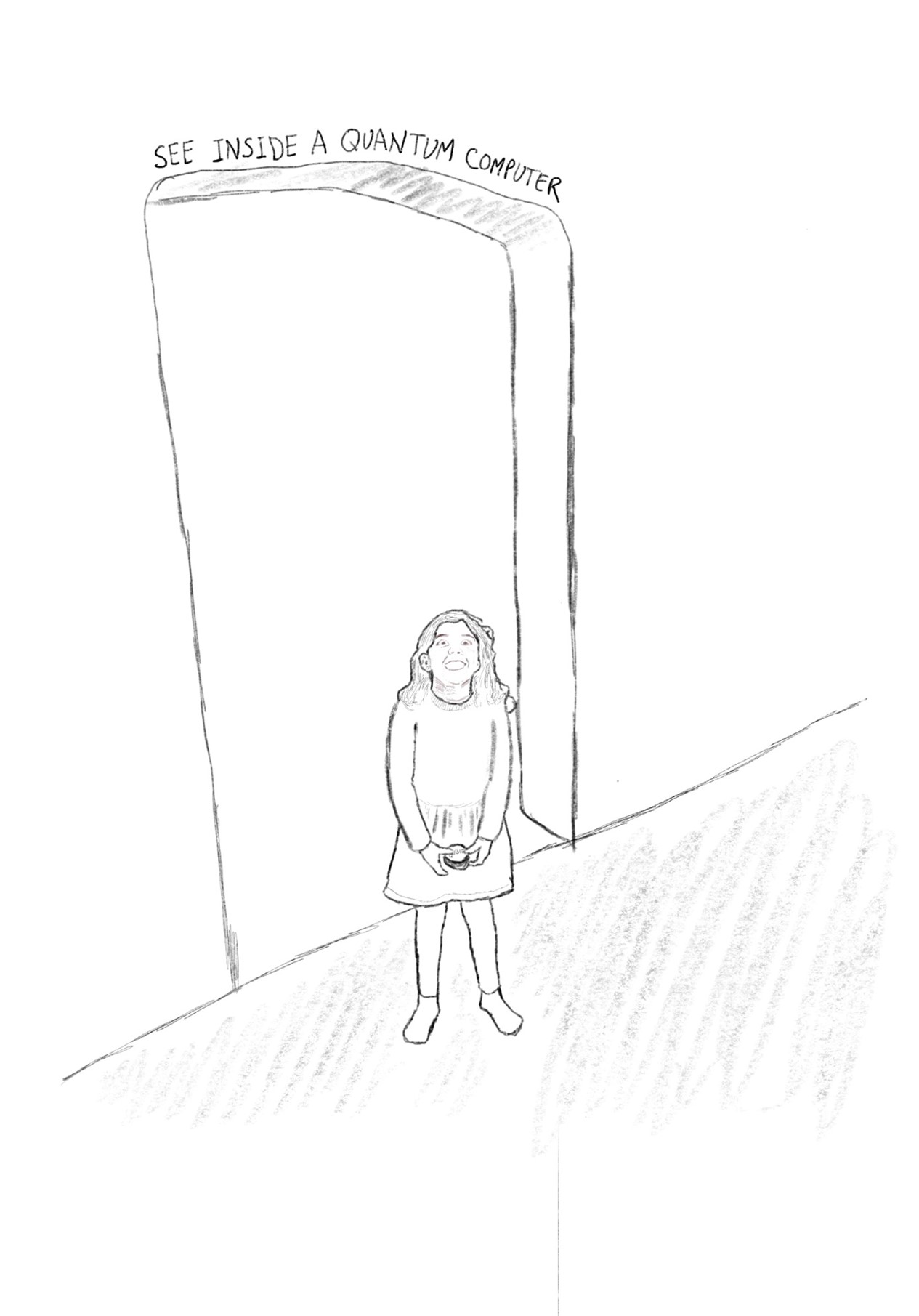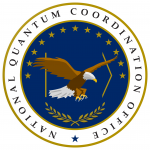Original Link: https://www.quantum.gov/a-quantum-wish/ Archived PDF: A Quantum Wish - National Quantum Initiative.pdf
Posted on February 1, 2022
A baby drops a spoon, and it falls.
Gravity may not be surprising to you, but it is to that one-year-old who giggles with delight.
We are not born knowing that objects drop. Gravity is only obvious because we experience it every day of our lives. This accumulated intuition let humanity build houses and bridges long before the physics equations that predict how gravity works were discovered.
Quantum physics happened in the opposite order. We don’t experience quantum effects directly. The laws of quantum mechanics describe how particles and matter behave at the smallest length scales. When physicists discovered these laws, they were baffled. That a particle could exist in two places at once doesn’t match our common sense (see sidebar). Yet, quantum mechanics is the most accurate theory of how the world—how the universe—works. Experiment after experiment has confirmed these predictions.
Despite our lack of first-hand experience, we have developed many applications that rely on our understanding of how the quantum world works. The transistor that runs your computer, the magnetic resonance imager that detects tumors, the Global Positioning System that gets you home: all these technologies rely on quantum properties of the simplest kind, the kind humans began to understand a hundred years ago.
Quantum information science applies the most surprising properties of quantum mechanics to how we process, store, and transfer information to create quantum information technology. A sufficiently capable quantum computer, for example, may solve some problems more efficiently than any classical computer ever could. Quantum sensors may be able to detect earthquakes in time to save lives.
Amazing careers in quantum information science and technology await our children. I believe that thirty years from now we will look back and think that building a useful quantum computer was inevitable. But today, even after almost 25 years of sustained effort, there are still immense scientific and engineering challenges to surmount. We need more talent to solve them, and not just physicists and computer scientists.
In the United States, the National Q-12 Education Partnership is working to bring quantum to K-12 education and beyond. The goal is to team quantum companies and professional societies with educators and government to develop and then expand access to K-12 quantum learning tools, inspiring the next generation of quantum leaders and ensuring educators have the support needed to bring quantum into the classroom.
Bridge builders (aka civil engineers) know their enemy from a young age: they fight gravity. Future quantum builders do not have that benefit. Right now, gaining the kind of deep, in-your-bones intuition needed to push quantum information technology forward means obtaining a graduate degree in (for example) physics.
A Ph.D. in physics is not necessary to become comfortable with the core concepts of quantum information science, but most of the challenges in building a quantum computer and figuring out what to do with it do require years of training. I hope that learning the basic concepts behind QIS will serve as a gateway, steering students to undertake the learning required to become a quantum chip designer, or a semiconductor physicist, or an expert in developing chemistry algorithms for quantum computers to tackle.
Games are one way to make quantum effects as familiar as gravity. But how do you visualize something as complex as a large quantum computer? Physicists take many different approaches; none are good enough to inspire the next generation.
So, here’s my wish (and challenge) for 2022.
You visit a new exhibit at a local or virtual museum on industries of the future. In the quantum corner, after learning some QUANTUM INFO 101, you can begin to meet some of the amazingly diverse people and technologies in the field. You then approach the capstone experience: “SEE A QUANTUM COMPUTER FROM THE INSIDE.” You and your daughter are each given a single-button device labeled QUBIT. Each visitor then represents a single qubit. You are told that the number of qubits present will affect what goes on inside the computer, and that getting closer to or farther from other qubits will cause them to interact and become entangled according to the laws of quantum mechanics. Pushing the button manipulates and “measures” your qubit. You enter the doorway.
Here’s the challenge for all my scientist, educator, artist, and communicator friends out there. What does that girl see? World Quantum Day is coming: April 14, 2022.

Quantum mechanical objects, such as single atoms, can behave as if they are in two or more places at once, even though they are really in a single quantum “state.” Quantum mechanics also allows for quantum entanglement: two or more atoms can be correlated no matter their distance apart. If you believe the quantum math (which hasn’t failed us yet), with each new particle you add to the system, you double the information stored. A quantum computer made up of just 50 perfect quantum bits (or qubits) processes 250 = 1,125,899,906,842,624 complex numbers at the same time. (Only the biggest of the biggest supercomputers today can simulate such quantum dynamics completely.) As the quantum computation evolves and these qubits interact, these numbers can even cancel out! This is where the unique power of quantum computing comes from. But the universe imposes a severe input/output crunch: when you check the state of your computer, you only get 50 numbers back out. Worse, the environment (e.g., heat, noise, light) tends to “measure” the qubits for you and in unhelpful ways. This decoherence destroys their quantum-ness and with it the ability to perform quantum computation. Decoherence is why we don’t directly experience quantum phenomena in our everyday lives, although quantum is all around us. Pretty amazing, huh?
Charles Tahan is a quantum physicist in Washington, DC, and the Director of the National Quantum Coordination Office at the Office of Science and Technology Policy. Learn more about the National Quantum Initiative at https://www.quantum.gov/ and about the Q-12 Education Partnership at https://q12education.org/
| The seal of the National Quantum Initiative. Find out more at www.quantum.gov |
